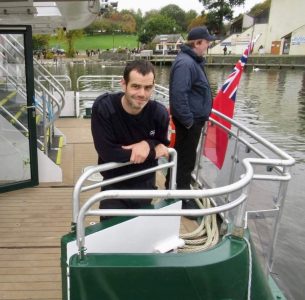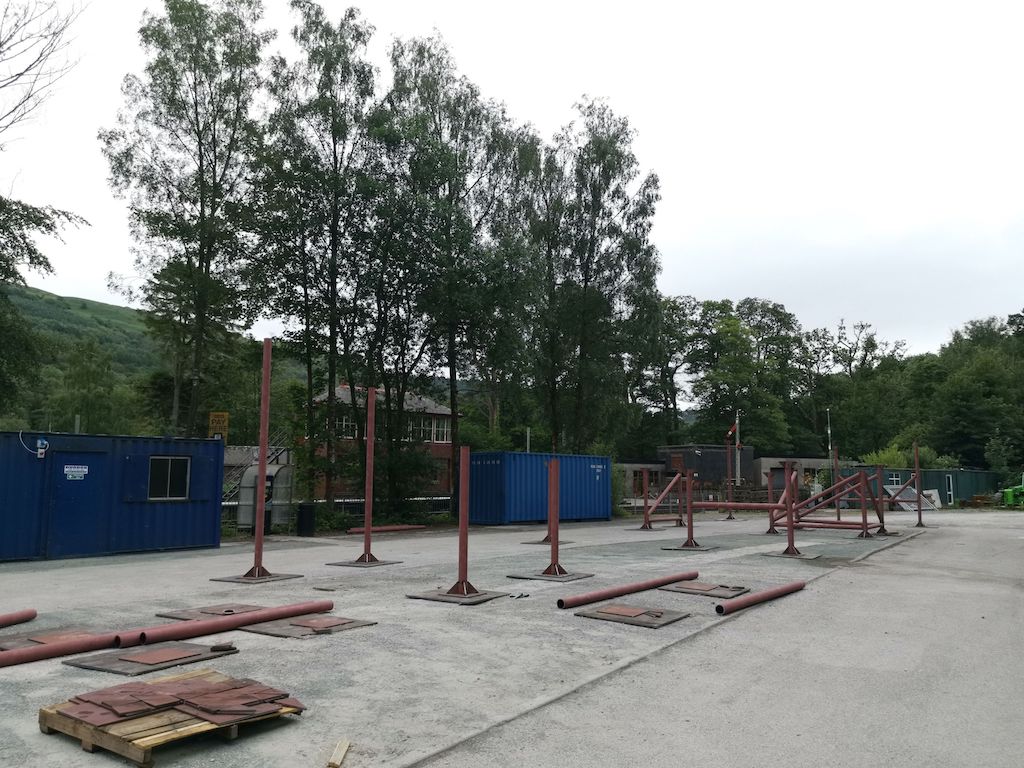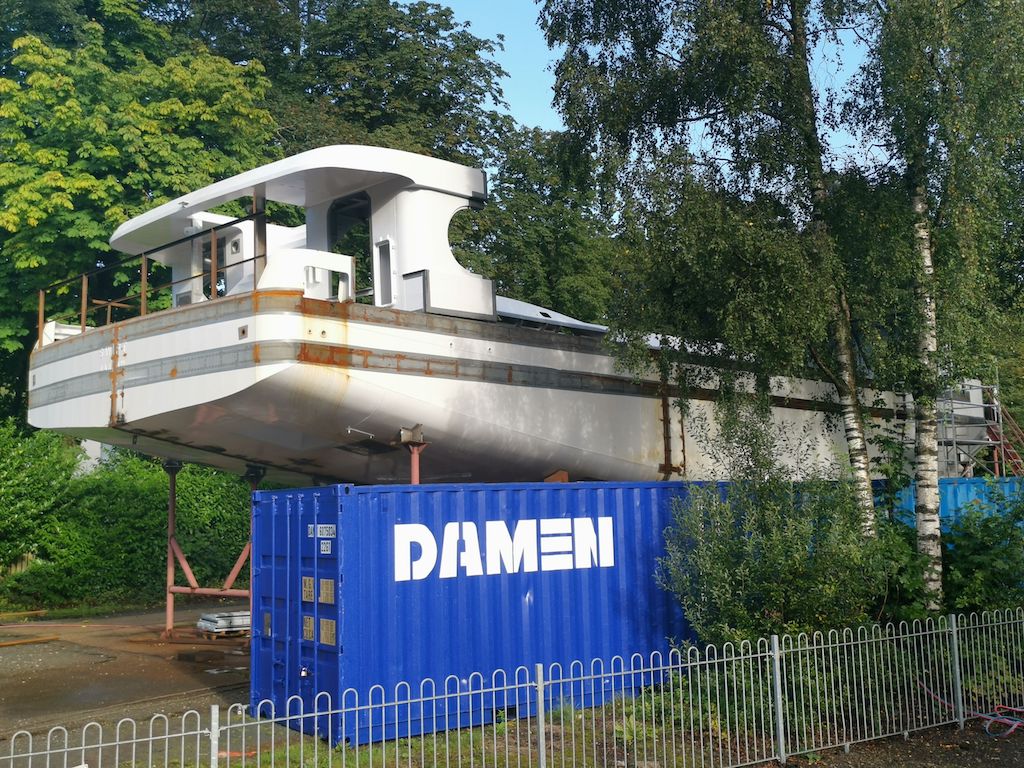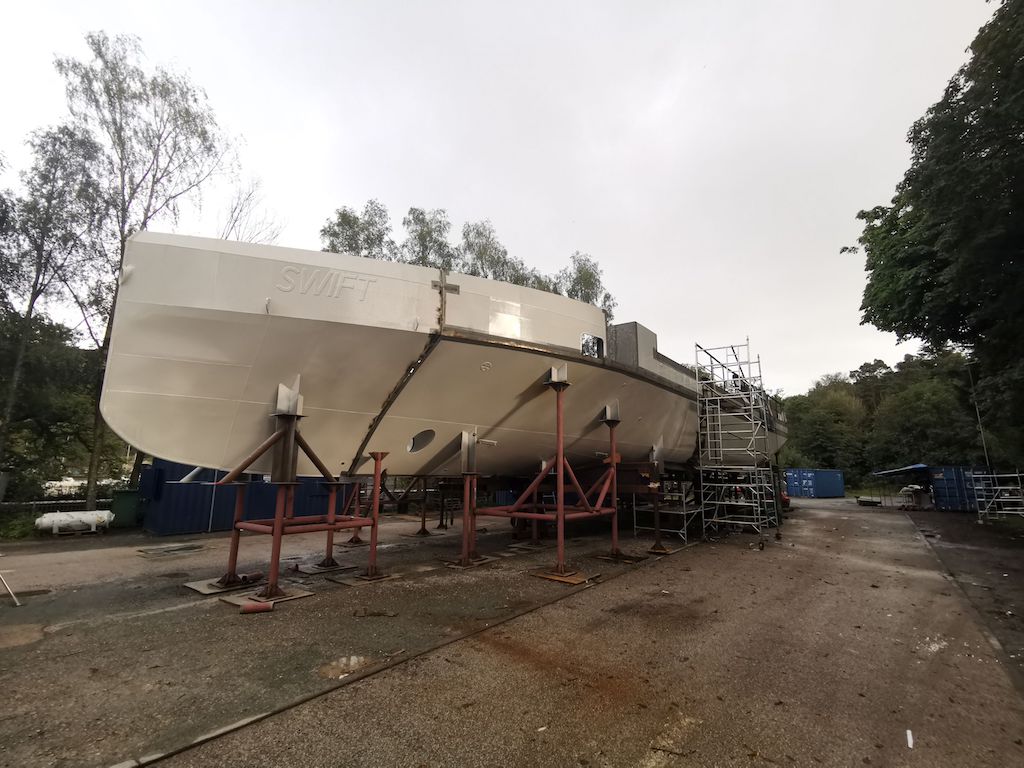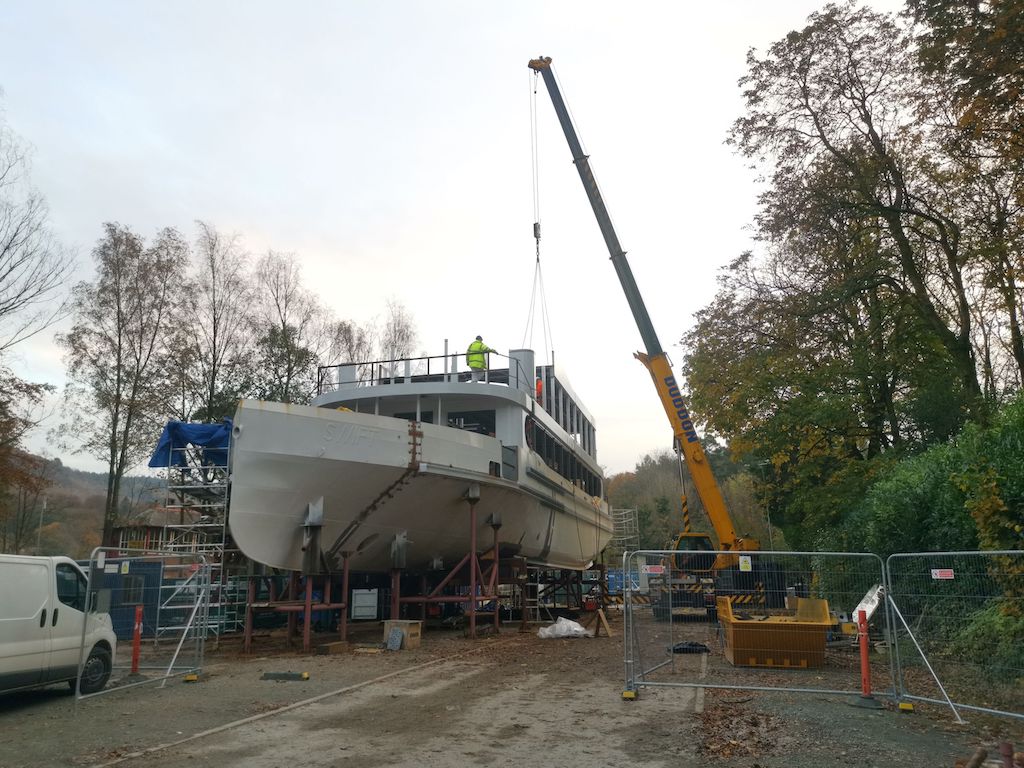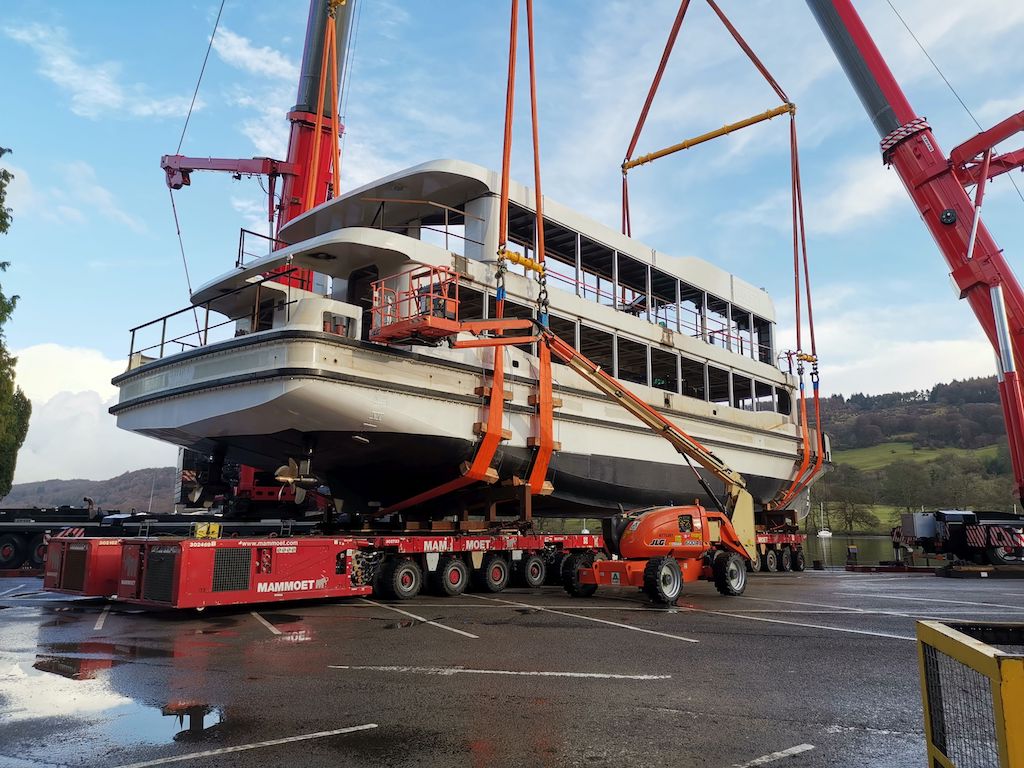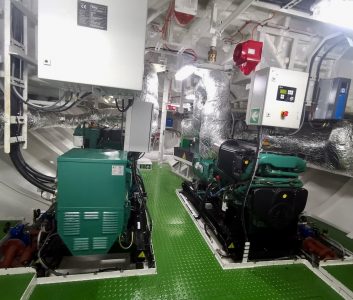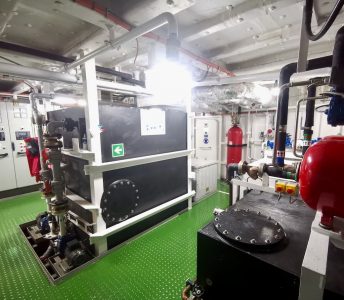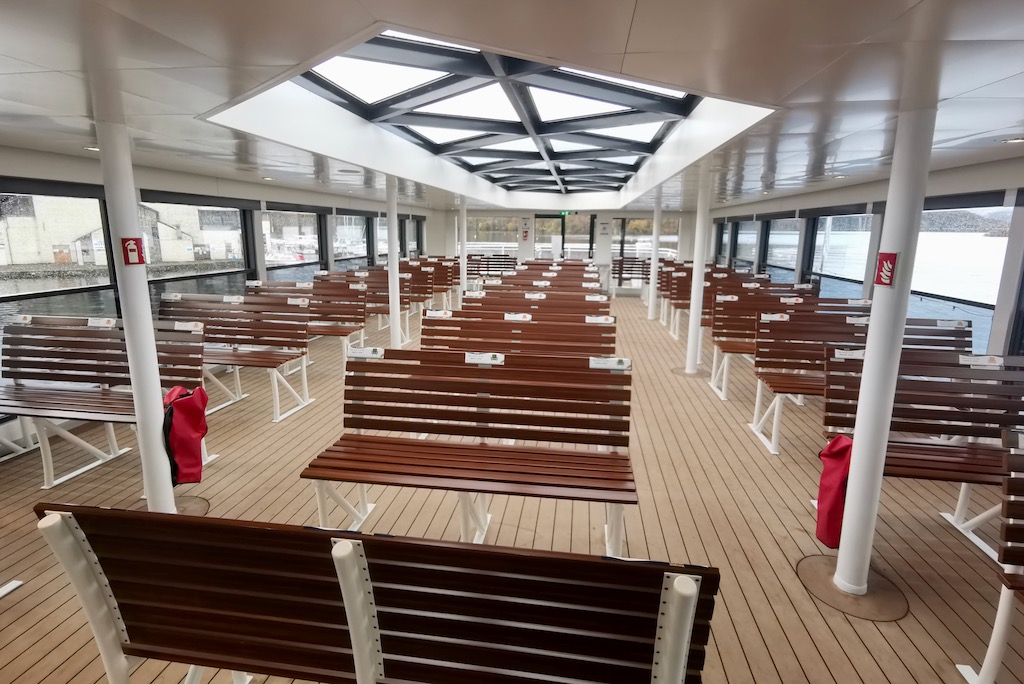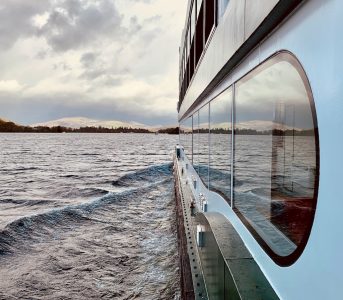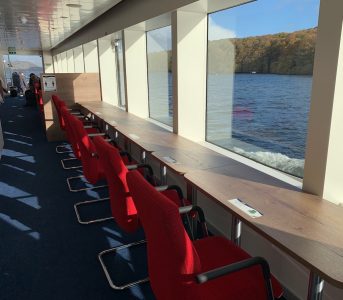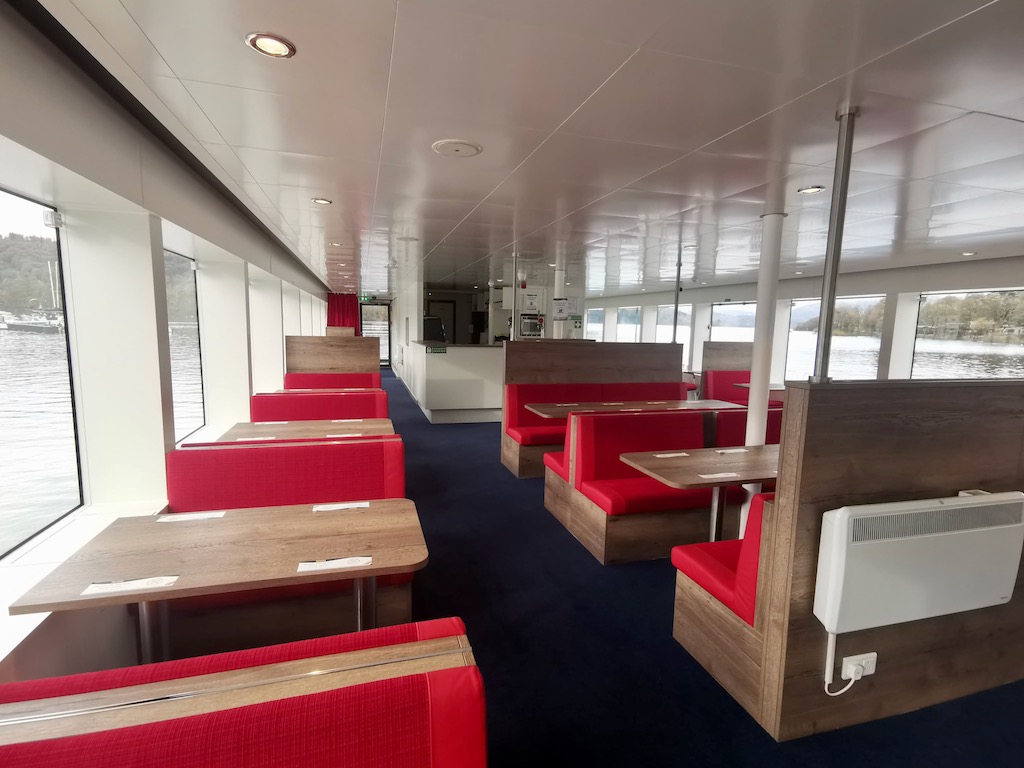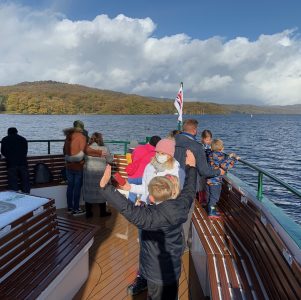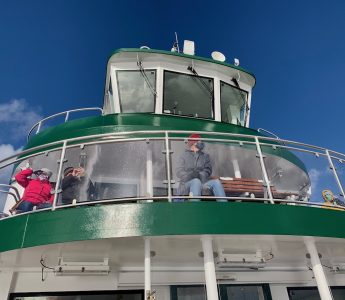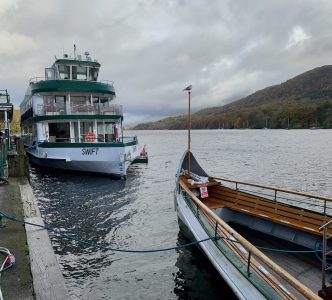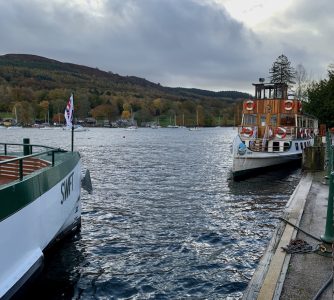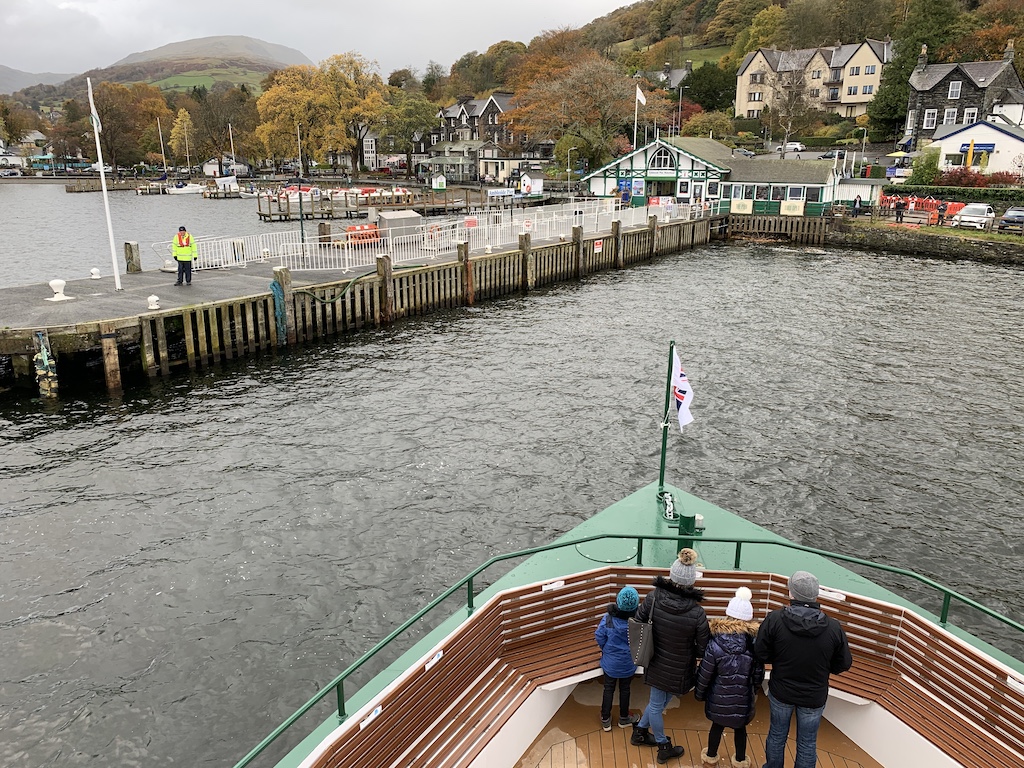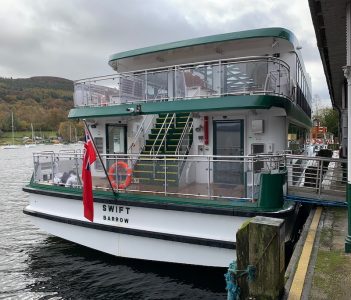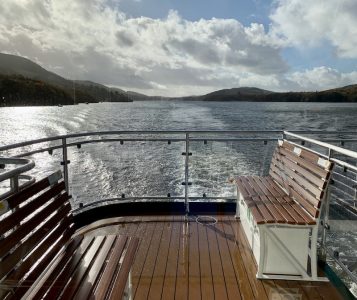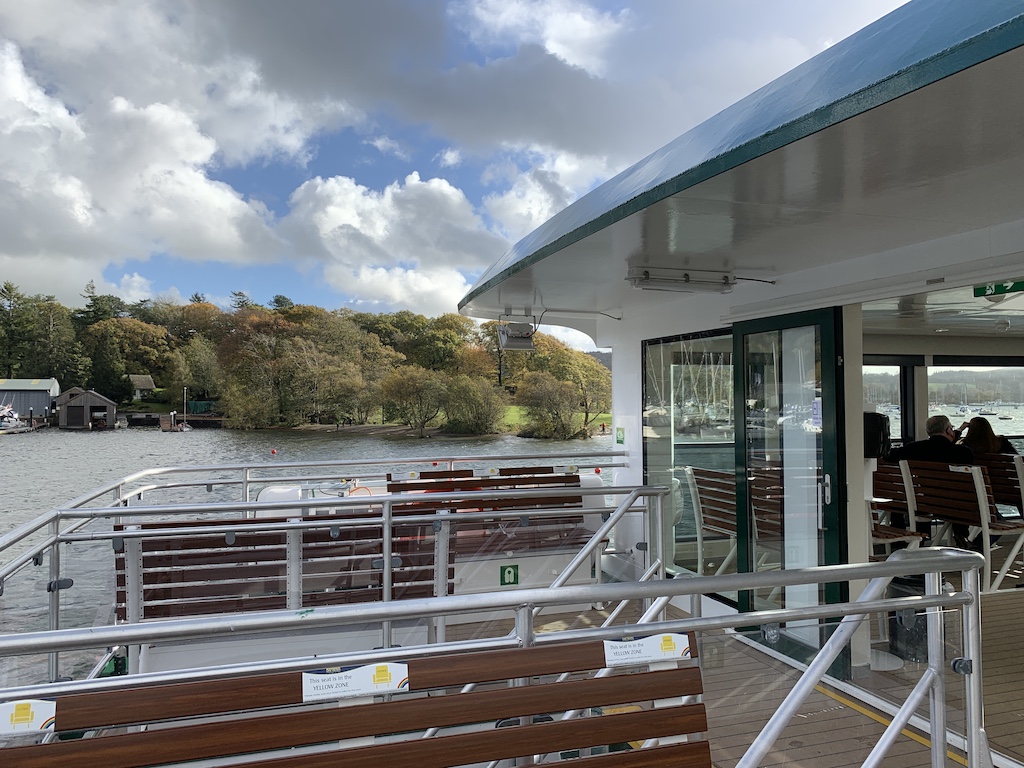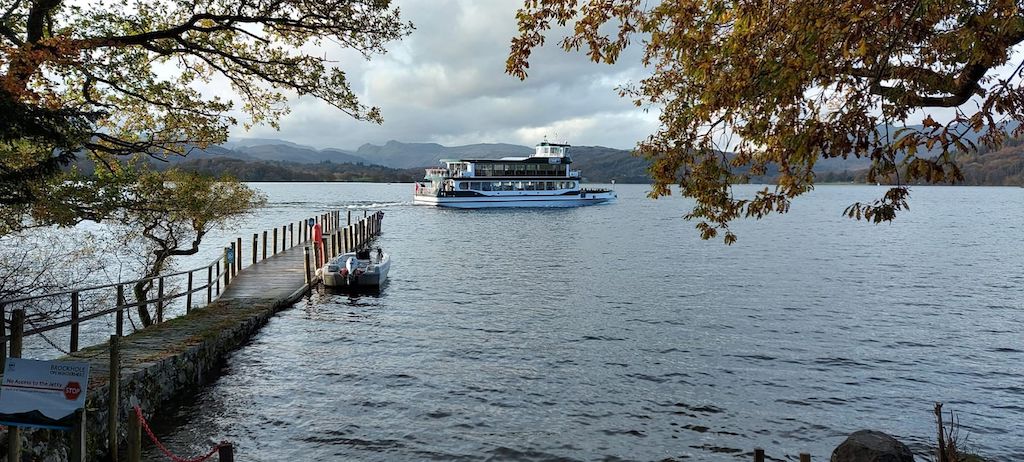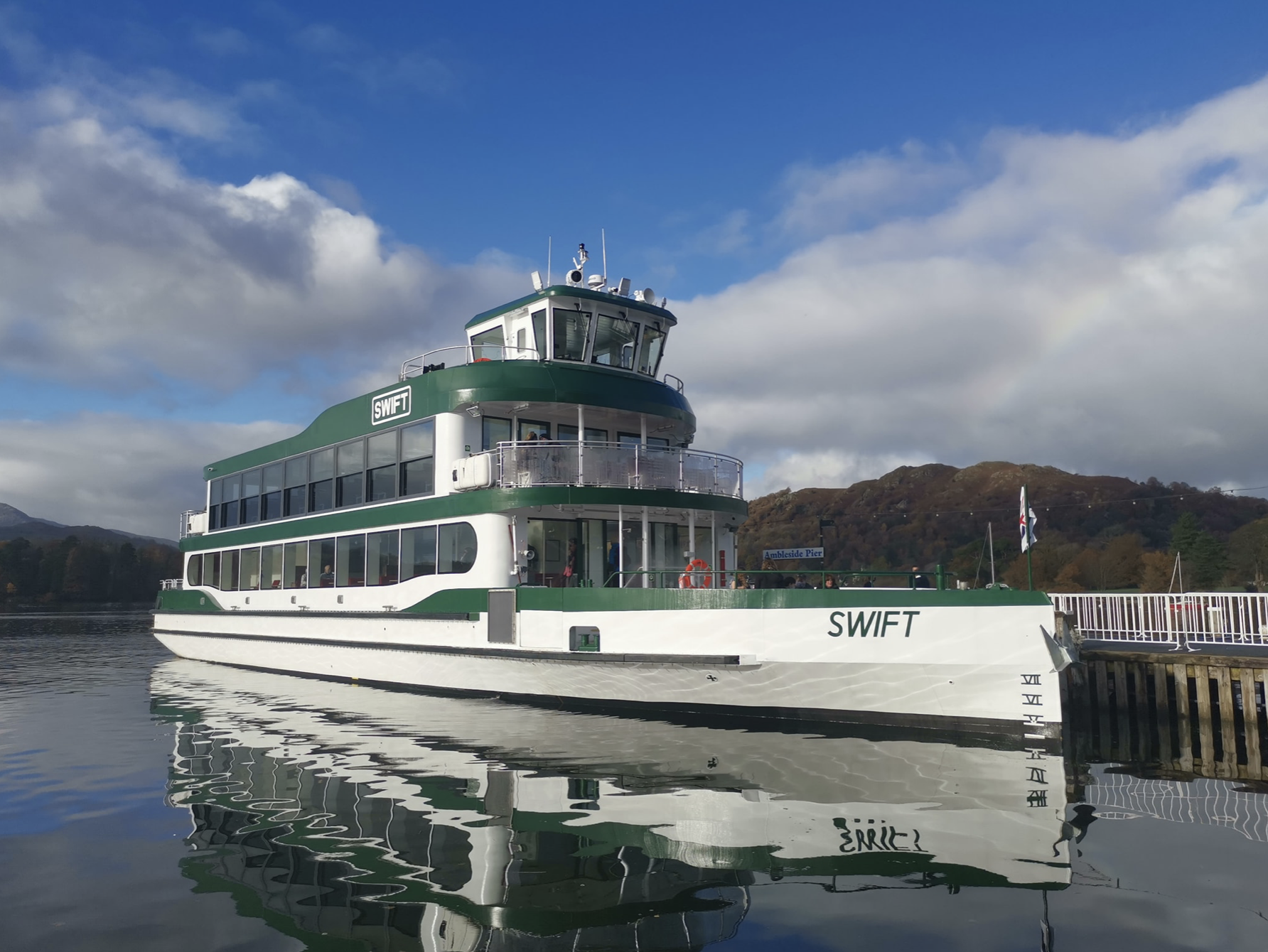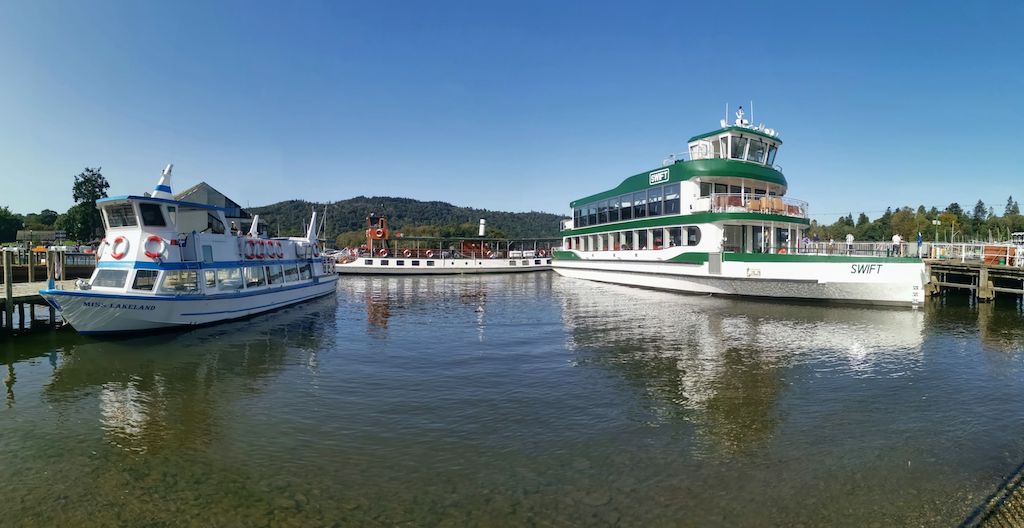
‘Quite different to other vessels on the lake’: Swift (right) making her first visit to Bowness on 17 September 2020, with Miss Lakeland (left) and Tern (centre) in attendance. Her construction was delayed by the national lockdown. Lake services have now been suspended by further restrictions, but are expected to resume in early December
The debut of an impressive new excursion boat on Windermere suggests that, while the number of passenger-only ships around our coasts dwindles, the tourist market on the UK’s freshwater lakes and lochs remains buoyant. Rob Beale, skipper of the new Swift on Windermere, introduces a vessel that seems destined to give pleasure to many thousands of trippers. His report is accompanied by a unique series of photographs documenting her construction and entry into service.
The Lake District is well known for its heritage fleet of vessels, plying their trade on four lakes within the confines of the National Park. In recent years tourism has increased to such an extent that it was starting to feel like there was no ‘off season’.
On Windermere, the busiest of the lakes, the larger ‘steamers’ are put to bed for the winter months, leaving the timetable during the colder months to smaller waterbus vessels. Between the mid 1960s and the early 1990s a new boat had been launched roughly every four years. Thereafter the fleet began to age. Until the addition last month of the splendid new Swift, there had been no new boats since Miss Lakeland II of 1992.
The situation had to change. In 2018 Windermere Lake Cruises, the main operator on the lake, approached a number of boat builders with a view to constructing an accessible vessel for year-round service. This was never going to be an easy assignment. Complications included the restricted access to the lake and the fact that the vessel would have to be built on site: the finished product would be far too large to be moved by road, like the smaller waterbuses had been. The ‘shipyard’ would be the car park behind the Lakeside Aquarium. The large slipway at Lakeside had to be kept clear for the existing Windermere fleet and their planned maintenance.
The Dutch Boatbuilding firm Damen rose to the challenge and, after the signing of contracts in March 2019, work commenced on the new vessel at their yard in Koźle, Poland. The first steel was cut on 9 April. Sections 103 and 104, which form the centre of the boat, were the first to be delivered, arriving at Lakeside on 22 July 2019 after spending a few days in the A590 lay-by at the top of Lindale Hill. At 11.30am a keel-laying ceremony took place, during which a 2019 £1 coin was welded to the keel.
Shortly afterwards sections 100, 101 and 102, which form the stern, left Koźle for Rotterdam on two lorries, and reached the UK on board Stena Forerunner early on 5 August, arriving at Lakeside the next day.
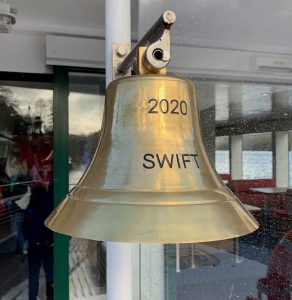 The new vessel was christened Swift, reviving the name of a much loved Windermere steamer that ran (latterly diesel-powered) from 1900 until 1981 and was finally broken up in 1999. The latest Swift is quite different to other vessels on the lake. Not quite a steamer, not quite a launch, she fits into a class of her own.
The new vessel was christened Swift, reviving the name of a much loved Windermere steamer that ran (latterly diesel-powered) from 1900 until 1981 and was finally broken up in 1999. The latest Swift is quite different to other vessels on the lake. Not quite a steamer, not quite a launch, she fits into a class of her own.
Her unique look is a direct result of her practicality. She has a low bow area designed for loading passengers at the smaller jetties around the lake, such as the Windermere Jetty Museum (Steamboat Museum), YMCA and Low Wood. Her stern gangway is positioned higher to allow her to load from the existing steamer piers. There is a small lift to allow disabled passengers to move from the main deck to the lower bow area. The main deck has automated doors and heated windows to stop them steaming up on wet days, whilst the upper deck has windows which slide down to create a semi-open deck similar to the upper decks of the established Windermere ‘steamers’ Swan and Teal.
Her main difference is her propulsion. All the other passenger boats on the lake use a rudder with one or two propellers. Swift has two azimuth propellers positioned either side at the stern. These can rotate 360°, allowing for superior manoeuvrability compared to her fleet mates. She is also equipped with a bow thruster.
Work continued at Lakeside throughout the summer of 2019. The bow section arrived on 3 September and the two engines were lifted into the hull on 31 October. The pods and drive units were installed in early December.
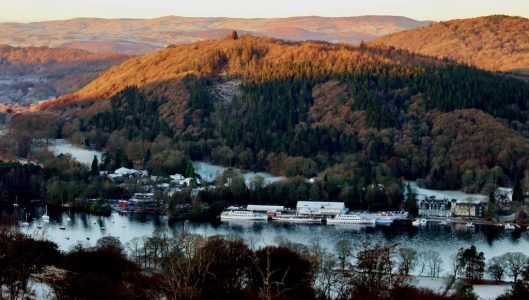
The scene at Lakeside in late November 2019, with three older vessels alongside the quay and Swift under construction on nearby ground to the left
In early December Mammoet, a Dutch company specialising in transport and lifting of oversized and heavy objects, arrived at Lakeside and on Tuesday 10th the ship was transported gingerly up the car park and past the Aquarium to the main car park where two 500-ton cranes had been set.
The following day at 11am Swift was lifted into the water and floated for the first time on Windermere. The wheelhouse was attached on the same day. At the time it felt like it wouldn’t be long until we could get our hands on the controls, but world events dictated otherwise: it would be many months before Swift would sail.
Fitting out commenced straight away at the bottom berth at Lakeside. Once the windows were lifted in (by yours truly!) and the vessel made watertight, an army of painters, joiners, engineers, electricians and pipe fitters set to work, and at one point work was even ahead of schedule. Then lockdown happened. Many of the workers on Swift were from Romania, Poland, Holland — and even Barrow! They all had to head home for the duration, and work ceased on the vessel for nearly two months.
In late May 2020 Damen’s staff returned and work restarted, albeit with a reduced workforce. I returned at the beginning of July to work on Tern: I hadn’t seen Swift since mid March. At that time Swift was little more than an empty shell, but now she was starting to look the part. The lower deck was fitted out and the toilets had been installed. Then the outer and upper decks were laid. ‘Laid’ may be a misnomer, as they were literally poured in! The finished effect is a deck that looks like wood but is more durable and non-slip.
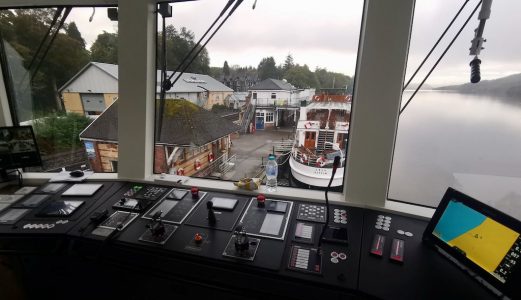
View from the bridge of Swift at Lakeside in October 2020, with Swan directly ahead. Swift is the first Windermere boat with a passenger lift
Swift is fitted with two diesel alternator sets powered by Volvo Penta D9 engines, each rated at 220kW. These are synchronised on the switchboard and provide power to the twin Hydromaster azimuth thruster units, which are rated at 155kW. All other needs on board, such as heating, lighting, catering and navigation equipment, are also supplied from the switchboard.
In late August the first exhaust was emitted from the funnel behind the wheelhouse and on 16 September Swift left her berth at Lakeside for the first time under her own power to synchronise the pods. The following day she headed out for trials, making her first call at Bowness. After a few adjustments, onboard trials took place again on 5 October, followed the next day by the start of crew training. She visited Brockhole for the first time on Thursday 8 October and carried out her MCA trials on the 13th. Ambleside was reached on 16 October and she entered service on the 23rd with a directors’ charter. Regular passenger service began the next day, with the 14.55 from Bowness to Lakeside — me at the helm!
Taking the helm of Swift for the first time was a daunting but exciting experience. She is so different to handle that initially when concentrating we were fine, but if we started to mess up a landing our natural instinct was still ingrained to react in the way we would to a vessel with more traditional propulsion. As the weeks have progressed our minds have started to think differently and berthing procedures have become more natural.
Throughout the winter period Swift will be based at Bowness and will sail four times daily between there and Ambleside. The service is currently suspended due to Coronavirus restrictions, and her 2021 timetable has yet to be decided.
Copyright for photographs on this page belongs to Rob Beale and Christopher Brindle, to whom CRSC is grateful for allowing publication here.
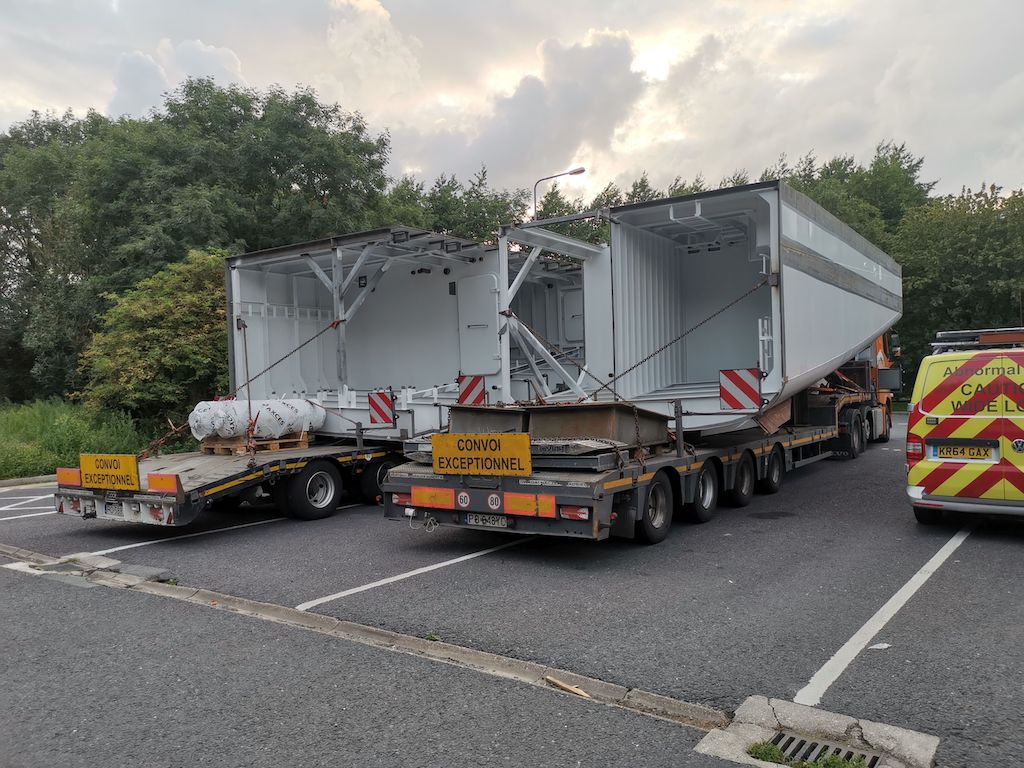
Sections of the new ship at Burton Services on the M6 in August 2019, en route from Poland to Lakeland
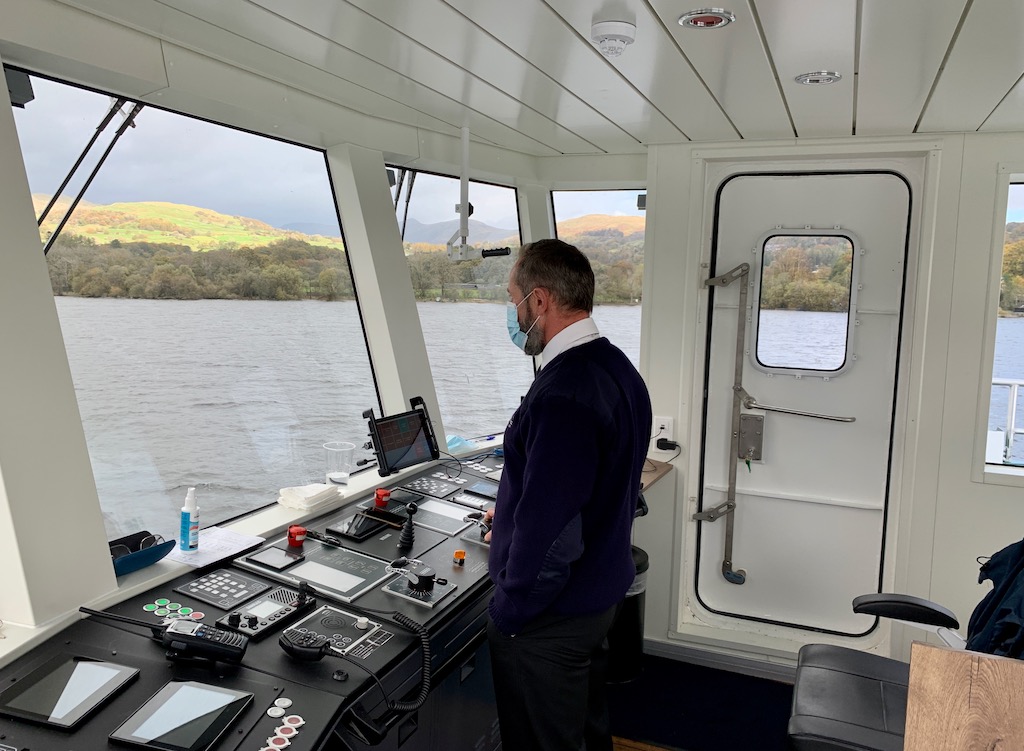
State-of-the-art bridge equipment: compared to older, less sophisticated Windermere craft, she is ‘so different to handle’
Published on 6 November 2020












